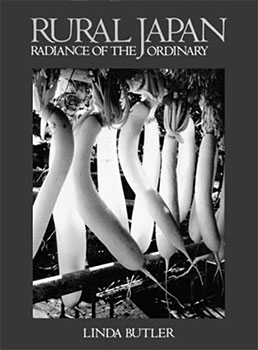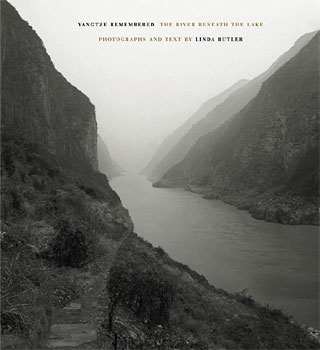| book recommendations
Paul Butzi has some interesting comments about Linda Butler's work at The Online Photographer:
The Gentle Transition
|
Most of the time the transition from "traditional" to "digital" photography is presented as a fundamental shift, unprecedented in photographic history. I disagree—I think that the challenges and opportunities presented by digital photographic equipment are merely evolutionary.
Consider the path of one particular photographer, Linda Butler, whose work extends over decades and spans a broad range of work. Butler’s path is interesting because at each point in her work, she’s been doing what I call "following the curve" as the technology available to her improved, using the new tools to extend her reach, and to make the photographs with less botheration and hardship.
[...]
So Linda Butler has gone from an 8x10 Deardorff and HP-5 film all the way to digital capture and hybrid digital printing. For each project, she picked the tools at hand that suited to capturing the subject according to her vision. As technology evolved, she’s had new tools to choose from and she’s chosen the new tools when appropriate.
| |
[more]
I've been seeing Linda Butler's name around and was interested in her work so Paul Butzi's comments were an impetus to go online to my library's website and order the two Linda Butler books that they had.

Rural Japan:
Radiance of the Ordinary
by Linda Butler
Rural Japan was of personal interest since I lived in Japan in my mid-teens during the late 1950s. We lived on the outskirts of Tokyo within an easy bicycle ride into rural Japan. I have many fond memories of the old Japan that was still there. Linda's pictures certainly qualify as pretty pictures but they are much more. She recorded a way of life that is disappearing. She also writes about her experiences in taking these pictures that adds immeasurably to the photographs. This book is out of print but used copies are available. And don't forget your library! From Barnes & Noble:
|
Taken on the islands of Honshu, Shikoku and Kyushu between 1986-1989, these exceptionally beautiful photographs capture the ``astonishing resilience'' of ancient rural customs amid the ever-increasing modernization of Japanese society. In 15 short episodes, Butler ( Inner Light: The Shaker Legacy ) tells of her experience traveling the coasts and countryside, detailing her encounters with farmers, fishermen, village people and mountain folk, some reticent, others gregarious. The text is charming and insightful, but it is the pictures that fascinate. In black and white, Butler shows us the otherworldly textures of an earthenware floor and the radiance of hanging radishes in Iwate-ken; the drizzling beauty of spring rain in Aichi-ken; the intense concentration of a Shinto priest and the eeriness of squid drying in the sun in Shimane-ken; the rippling water and stormy skies of a fishing wharf in Aomori-ken; and the camaraderie of a group of laughing gateball players in Yamagata-ken. Whether shooting a portrait or a still life, Butler uses her camera to distill the pure cultural and aesthetic essence from these rural areas.
| |

Yangtze Remembered:
The River Beneath The Lake
by Linda Butler
Yangtze Remembered is even more ambitious. From Amazon:
|
In June 2003, the Three Gorges Dam opened and a reservoir the size of lake Superior began to form, inundating 372 miles of China’s Yangtze River Valley. As 1,500 cities, towns and villages disappeared beneath the dark waters, more than a million people were being moved. Around the reservoir, huge construction projects are still transforming the landscape; mighty dikes, long bridges, apartment towers, and sprawling cities are springing up.
Between 2000 and 2003 Linda Butler made eight trips to the Yangtze to photograph the people, the human environment, and the natural landscape before, during, and after these changes. She spent long weeks in the busy cities and remote villages. Lyrical photographs of dramatic vistas are paired with images showing the ravages visited on this region by coal mining and erosion. Intimate shots of interiors reveal the contents of homes and stores, a table set for an impromptu meal, or a shop counter scattered with seed packets and posters of Mao. Informal portraits of local inhabitants preserve a record of the people as they carry pigs to market, load all their household furnishings onto a boat, or play badminton on a village street.
Accompanying the images is the photographer’s travel commentary, which reads like a dynamic series of short stories. Butler’s words reveal the invisible stories of the common people as they struggle to come to terms with the destruction of their homes and lives. Since ancient times, the Yangtze River itself has been like an unpredictable neighbor—sometimes generous, but at other times wrecking havoc on the lives of others. Perhaps because the river people have lived near such volatility they have developed a profound resilience in the face of adversity.
"Yangtze Remembered" is both a measured and a passionate book. The powerful images reveal much that we have never seen before and cannot ever see again.
| |
Powerful, indeed!
|

